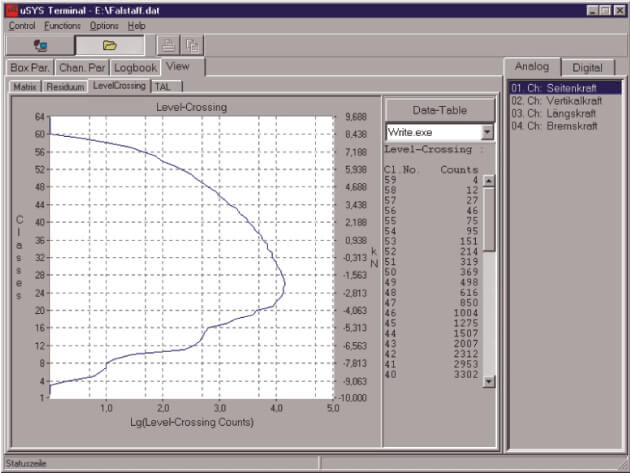
With this counting method, every time the load-time history crossing a class limit in a positive sense, a count is performed. The counting of level crossings neglects small load variations when they are in one class. This is not the case, however, when a class limit is crossed (by however small an amount). For this reason the result of this counting method depends on the magnitude of the amplitude suppression. The result of the counting is a cumulative frequency which is usually presented in a spectrum.
Typical Applications and Properties of Level Crossing
This counting method is used to count continuous loadtime histories for subsequent analysis of fatigue. The significant advantage of this counting method is that it is one-parametric and can easily be put in a graphical form in a so called spectrum. The disadvantage is that for some load-time histories, especially with mean stress variations, this counting method gives too severe a spectrum. A comparison with the Range Pair evaluation method helps in these cases to be aware of critical cases.
